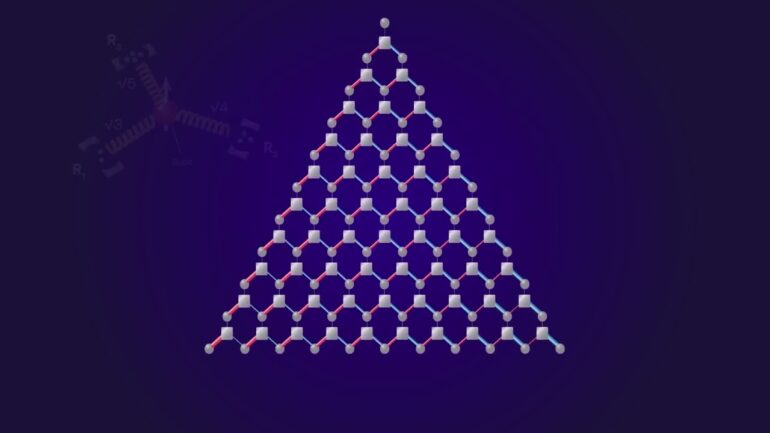A quantum device fabricated by Zhejiang University researchers could help to advance the design of quantum computers as it offers topological control over the units that store information within them. The team’s results were published in Science in December 2022.
Since their discovery around 2007, quantum materials, known as topological insulators, have been generating a lot of excitement due to their intriguing properties. For example, they are insulating in their interior, but conducting on their surfaces. This property stems from the topological nature of these materials, which makes them robust to deformations, so electrons moving along their surfaces resist any obstacles that might obstruct their flow.
Researchers have started to explore similar topological systems that are based on light rather than electrons—a field known as topological photonics. But so far, most such light-based systems have used classical forms of light rather than quantum ones. The ability to use quantum forms of light would open up many more possibilities and offer an opportunity to explore the quantum topology of light.
“Most experimental efforts in topological photonics still used classical models of light to mimic the properties of electrons in quantum models,” says Wang Dawei, one of the study’s authors. “I wanted to build new models to explore the interplay between topology and light quantization, hoping to exploit the quantum properties of light for topological photonics.”
New modes of control
For several years, Wang Dawei developed new theories but he wasn’t able to test them experimentally until he moved to Zhejiang University in 2017. There, Wang Haohua, a professor of physics at the university’s Superconducting Quantum Device Lab, led a team to develop a circuit design that coupled several resonators to one qubit, providing a chance to realize and control the quantum topological states of light.
Standard superconducting circuits can already couple multiple resonators to one qubit, but usually their coupling strengths were fixed after fabrication, explains Song Chao, a professor of physics in Wang Haohua’s team. “The biggest challenge is how to make the coupling strength between each resonator and qubit independently tuneable,” he says.
To control the coupling strength, the team adopted the inductive coupling scheme—the transfer of energy in the form of magnetic fields from one coil to anther coil, and introduced an additional coil into the coupler circuit design. It functions as an intermediary between the qubit and each resonator. An external magnetic field through the coil can change the coupling strength between the qubit and each resonator. “The coupler works like a transformer that transmits electricity from power generators to municipal lines,” Song notes.

Fock-state lattices of multimode Jaynes-Cummings models. © Science (2022). DOI: 10.1126/science.ade6219
One circuit, multiple phenomena
By configuring the device in different ways, Wang Dawei and colleagues were able to experimentally demonstrate several topological behaviors of quantized light in one- and two-dimensional lattices.
“It’s interesting that these experiments were all done on a single quantum circuit,” comments Wang Dawei. “That could not be achieved with traditional topological photonic structures.”
For Song Chao, the new ways that this device offers for controlling qubits could help advance the design of quantum computers. “Such a device with so many new physical phenomena can certainly provide insights in developing new quantum control technologies,” says Song Chao. “I think that’s very exciting.”
The researchers also hope that the device could yield new discoveries in topological photonics. “By coupling many resonators to an atom or to many atoms, we can design lattice structures that have never been considered by condensed matter physicists,” says Wang Dawei. “In this way, I think we open a new field, or provide a new platform to study high-dimensional topological physics.”
More information:
Jinfeng Deng et al, Observing the quantum topology of light, Science (2022). DOI: 10.1126/science.ade6219
Provided by
Zhejiang University
Citation:
A quantum playground for exploring light topology (2023, March 13)
